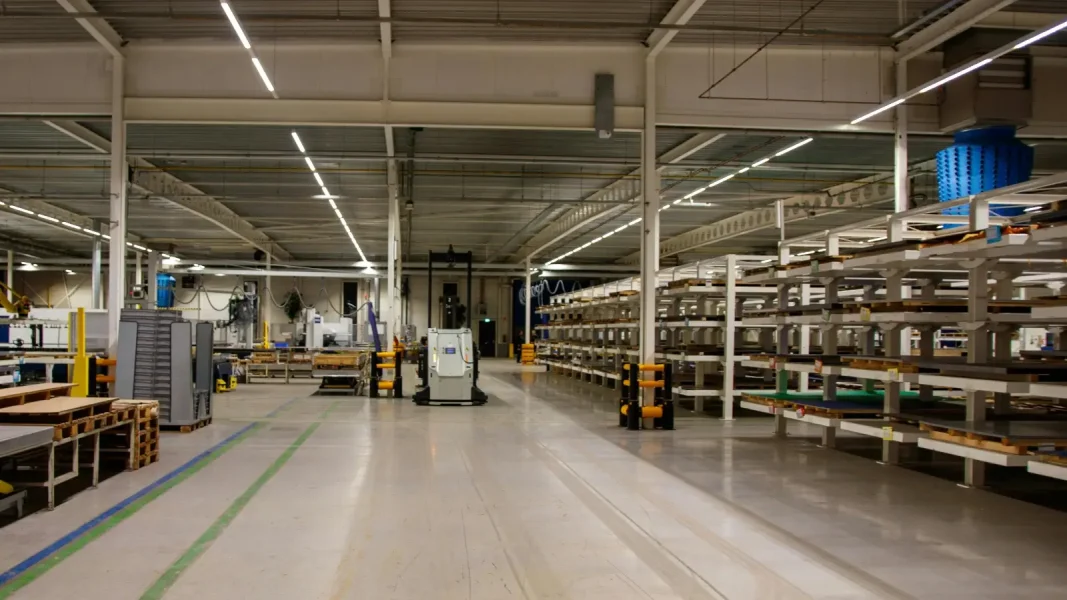How can we customize and evolve our business processes to meet market trends and our strategic objectives?
All retailers ask themselves this question.
- You need to integrate new competitors into your pricing strategy ?
- Have you redefined your product segmentation and need to rework your prices?
- Vou’re faced with events that are disrupting your supply chains?
There’s no time to wait for the next release of your business tool to react, or risk being outflanked by more agile competitors.
To respond to these changes, you need adaptable, customizable business, pricing and supply chain solutions. You should be able to configure your processes immediately and independently.
The answer lies in a ” No code, Your mode ” approach, powered by a business rules engine.
This native functionality, at the heart of our two solutions, optimiX XPA and optimiX XFR, is designed to enable teams to parameterize and customize processes without the need for new computer code.
Find out more about the rules engine and how it can benefit your business.
The Business Rules Engine: No coding
What is a Business Rules Engine?
In a software solution, a Business Rules Engine is a feature that enables users to automate processes by defining rules, without requiring technical expertise to automate processes by defining rules, without the need for technical expertise.
At optimiX Solutions, the rules engine is the component that makes the“No code, Your mode” approach a reality in our pricing and supply chain solutions.
The aim is threefold:
- Empower business teams to customize the solution solution and processes without additional IT development
- Always in good working order from one version to another. When upgrading to a new version, the rules engine settings remain functional.
- Enable a pricing or supply chain professional to intuitively parameterize their business gestures in the solution
The rules engine gives you the ability to respond to any business, pricing or supply chain issue, without any new development.
It combines personalization with team empowerment. In fact, many customers express the need for a empathetic software, which “speaks” the same language as its business users.
With the rules engine, there’s no need to translate team requirements into code. You don’t need your IT department or data experts to run your solution. Business users are in charge.
Not only can they rely on the rule engine to configure without any special technical skills. The user interface allows them to parameterize and control their decision criteria without external support. What’s more, the machine learning algorithms at the heart of the software “replace” specific skills, such as supply chain forecasting.
How the optimiX rules engine works
The optimiX rules engine is based on three key components:
- Filters The “Product” and “Site” fields are used to define the scope of action, whether by product, site, or any other relevant segmentation. For example, you can filter out large import suppliers or highly price-sensitive products.
- Actions (or processing): These are based on algorithms that may include AI, without the user needing to understand the technical details.
- Constraints Constraints: These are used to limit the result of processing, for example by limiting the evolution of a price to a maximum of 10%.
This structure makes it possible to create complex scenarios tailored to your needs and your business.
The benefits of the "No code, Your mode" approach
Customization without IT development
The rules engine perfectly embodies the “No code, Your mode” approach, making it easy to customize business solutions without additional IT code. At a time when companies need to become more agile, without having to invest heavily in new internal profiles, the functionality makes customization accessible to business users themselves.
The business rules engine eliminates the technical barrier often associated with business software configuration. Users, whether pricers or purchasers, are autonomous in adapting rules and scenarios directly in the tool, without having to go through IT or data profiles.
This ease of use is underpinned by an intuitive interface that provides pre-configured components (filters, actions and constraints) to meet any business need.
The rules engine is designed to adapt to the specific organizational and strategic needs of each company. Whether you need to define pricing processes (e.g., adjust prices according to the sensitivity of a product category) or optimize sourcing (e.g., manage constraints linked to local suppliers or large imports), you can parameterize filters, actions and constraints to configure a theoretically unlimited number of scenarios adapted to your needs.
The rules engine can be configured either directly by the customer’s own teams, or with the support of a project manager, to help users develop their skills. If necessary, the project manager helps customers define the right rules and structure their scenarios in line with their pricing or supply chain strategies.
Greater responsiveness to market trends
The second benefit of the rules engine is its flexibility. flexibility that it offers retail teams to adapt to market dynamics. In recent years, with one crisis following another, or even overlapping, companies need to be able to adjust their processes rapidly.
In terms of pricing, in most of the verticals we address, our customers are stressing the need to change their prices much more frequently than in the past. In terms of the supply chain, unforeseen events such as the blocking of the Suez Canal, the COVID crisis and shortages of certain products are forcing retailers to be very agile in their management of supplies and stocks.
However, this agility is unattainable if you have to wait several weeks for a new development before reorienting your business processes.
The strength of the rules engine lies precisely in the fact that it enables pricing and supply chain teams to adjust their processes in real time, without waiting for software updates or IT intervention. adjust their processes in real time, without waiting for software updates or IT intervention, to respond to market fluctuations. For example, a pricer can quickly adjust pricing rules to maintain margins in the event of a sudden rise in prices for certain products.
The business rules engine offers an unlimited number of scenarios that can be easily configured without adding any code. Users can even build, test and deploy new scenarios in just a few clicks, so they can experiment with different approaches and implement them quickly.
Finally, the business rules engine offers total transparency on the impact of each step in a scenario. So you can quickly assess the effectiveness of new rules and adjust your scenarios accordingly.
Stability of configurations between versions
The rules engine offers advantages in terms of investment continuity and stability between different versions of the software.
This is because rules and scenarios configured in the rules engine remain functional from one software version to the next. The effort invested in creating complex scenarios and customized business rules is preserved over time.
Thanks to this stability, business teams are not obliged to systematically call on their IT department or developers to maintain their configurations when the software evolves. Users don’t need to reconfigure or adjust their settings during updates. They can just continue to use their existing scenarios without interruption.
This stability allows teams to gradually enrich their scenarios without fear of losing their work.
Empowering business teams
The rules engine aims to make it easier for users to do their jobs pricing or supply chain. Whatever the strategy defined upstream by the retailer, the rules engine enables the appropriate rules to be configured for operational implementation without delay or technical constraints.
As we’ve seen, this means greater agility in strategy implementation, and greater responsiveness to market changes.
The rules engine also plays a key role in empowering business teams: they are no longer dependent on the supplier or their IT department to configure new rules. The rules engine’s intuitive interface enables them to create and modify complex scenarios without any specific technical skills.
Users can thus create scenarios tailored to their needsThis can be done by product category, geographical area or any other relevant criterion. They can develop several scenarios to suit their company’s environment and organization. And they can do so while minimizing the risk of error, since the rules engine offers traceability on the scenarios. Users can, if they wish, evaluate a scenario, review the rules or revert to an earlier version.
----------------------------
In short, the “No code, Your mode” approach strengthens your agility and the appropriation of our software solutions by your teams. Your business users can fully play their role in deploying your pricing and supply chain strategies without technical dependencies.
This approach, which facilitates adaptability, is also resolutely ROI-oriented. It allows new strategic orientations to be implemented without delay, and several distinct scenarios to be run according to various segmentation criteria (product, customer, store typologies, etc.).
This gives you greater flexibility and granularity in your internal processes, without having to constantly invest in new development budgets.
You too can optimize your pricing and supply chain operations with our rules engine.






